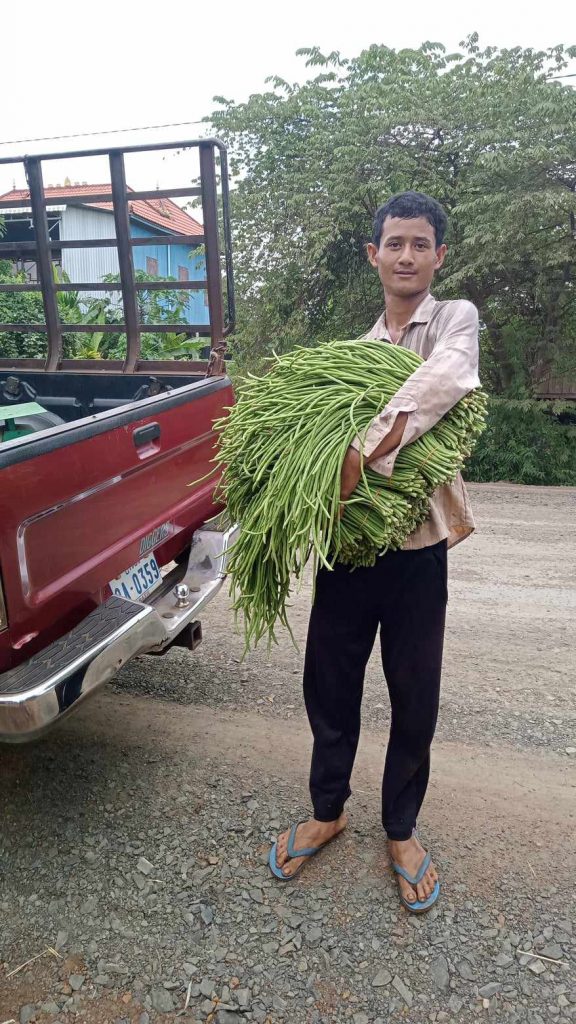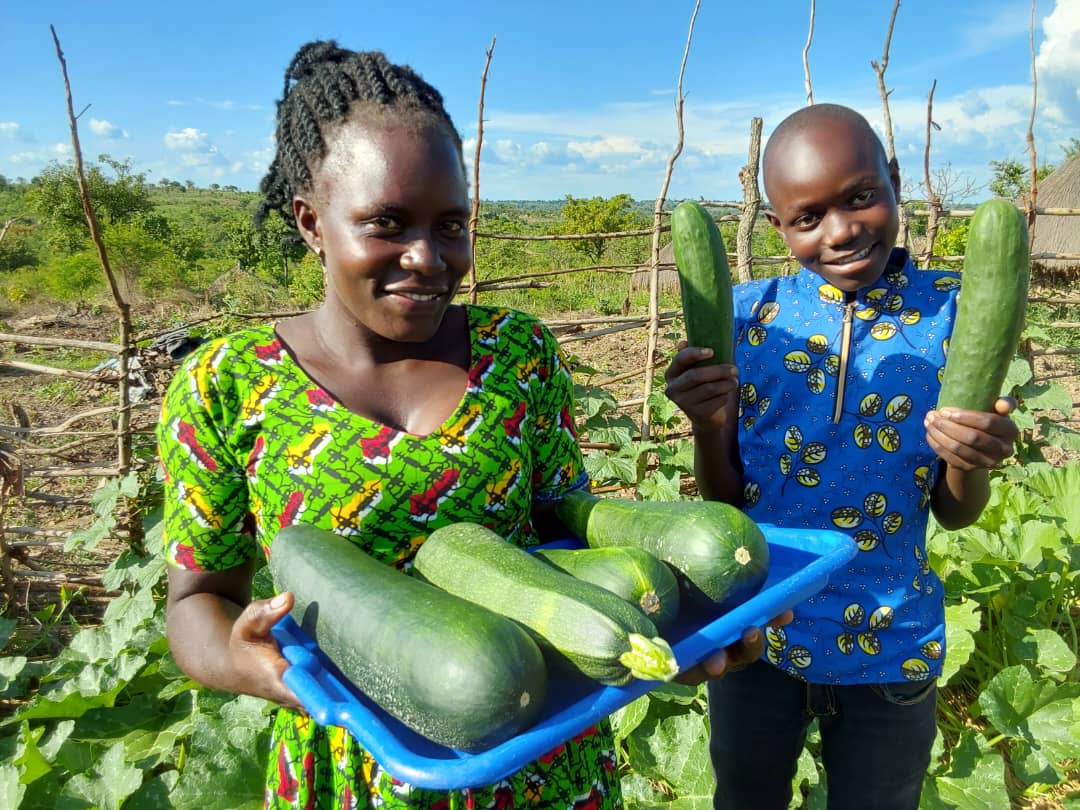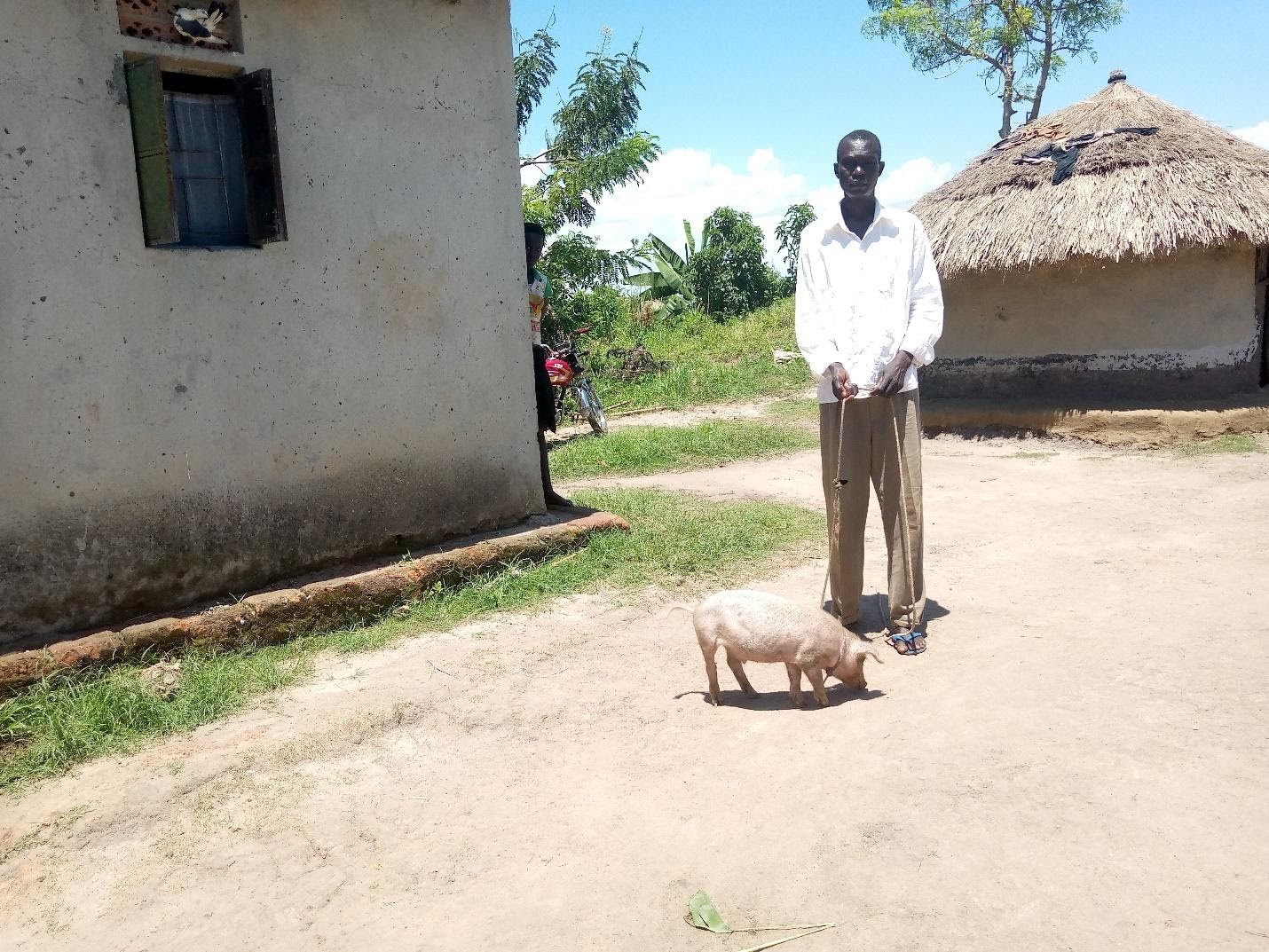Drip Irrigation Brings Phearun More Vegetables with Less Effort
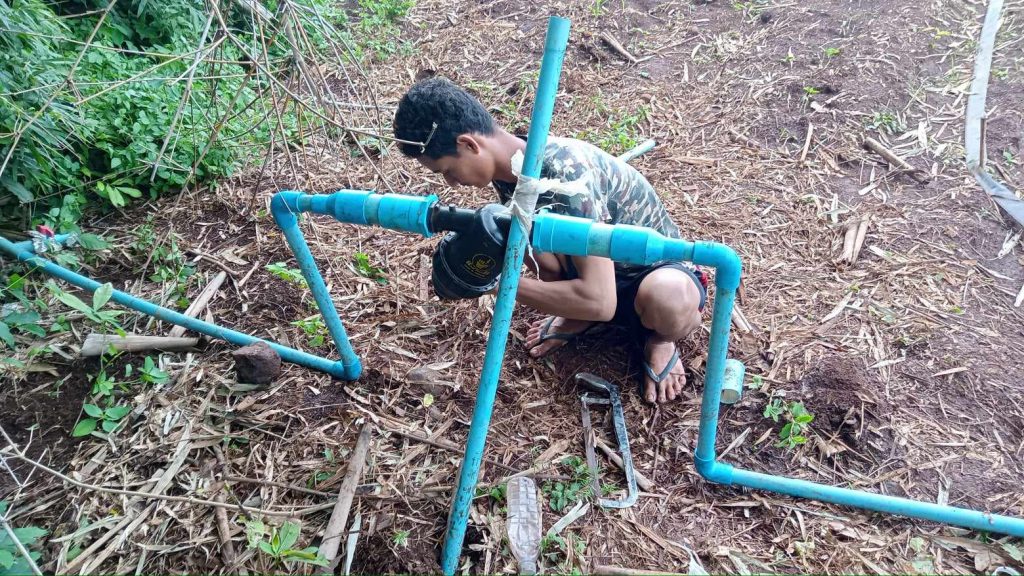
TBOUNG KHMUM PROVINCE, CAMBODIA — Drip irrigation has been a game changer for Phearun Kean, a young farmer in the central lowlands of Cambodia. The 28-year-old had been farming for several years when he heard about East-West Seed Knowledge Transfer Foundation’s Grow Against the Flow project, which provides smallholder farmers with training in effective methods for off-season vegetable production.
One of the techniques introduced by the Grow Against the Flow project is drip irrigation, and that is what captured Phearun’s interest. He was watering his field with a garden hose and spray nozzle, and he knew there must be a more efficient way to irrigate his crops.
Working closely with EWS-KT’s expert field staff, Phearun began to prepare a 500-square-meter demonstration plot for a yard long bean crop, using improved techniques such as raised beds, plastic mulch, and drip irrigation. All of these methods help to conserve water.
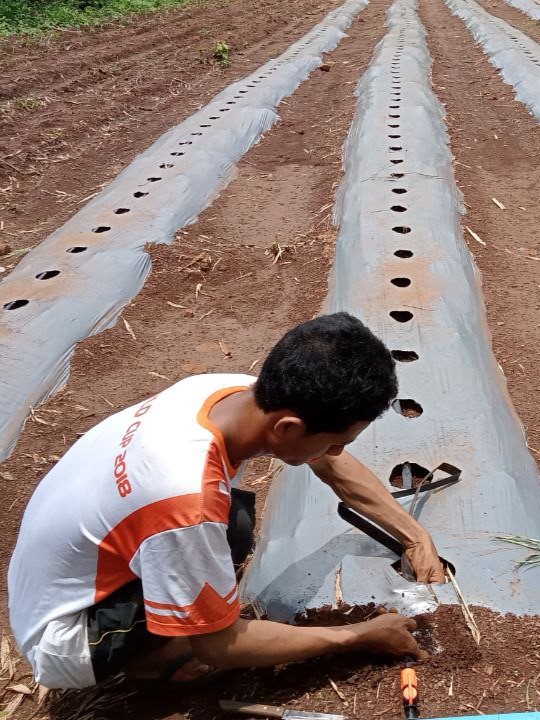
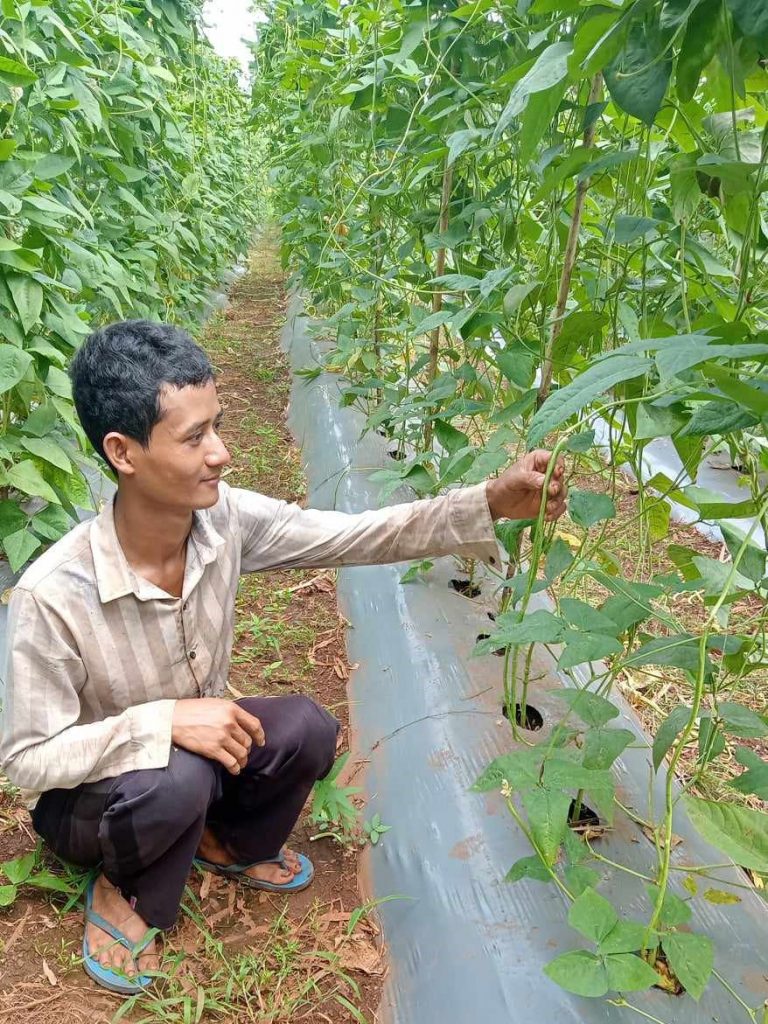
Phearun gets very excited when he talks about the yard long bean harvest he is able to produce with his new irrigation system. He estimates his yield is 40% higher than when he was watering with a hose. “Drip irrigation is a real salvation for me,” he said. “It not only enhances water and fertilizer use efficiency but also reduces weeds and saves time.”
It used to take Phearun 1 to 2 hours to irrigate 500 square meters of farmland with the water from his well. With drip irrigation, he now only spends 10 to 15 minutes. Moreover, he can fertilize more effectively; when the time is right, he simply adds the correct amount of fertilizer to the irrigation system, delivering nutrients directly to the plants’ roots.
The methods he adopted have also reduced the number of weeds on his land. Mulch controls weed growth, and drip irrigation directs water to the vegetable plants, not nearby weeds. With these measures in place, Phearun found that he saved considerable time on weeding, and with less need for herbicides, he had lower costs as well.
“With traditional irrigation, I wasted too much water and too much time. It was much more effort, but I got less yield,” Phearun said. “Now the drip irrigation system has made my farming achieve much more yield, and I get a better profit.”
After the success he experienced with the Grow Against the Flow project, Phearun increased the amount of land under cultivation, producing more yard long beans as well as cucumbers and corn. “My increased farm income provides me with more money to improve my livelihood through more farm equipment, support my little child, and save for the future,” he said.
